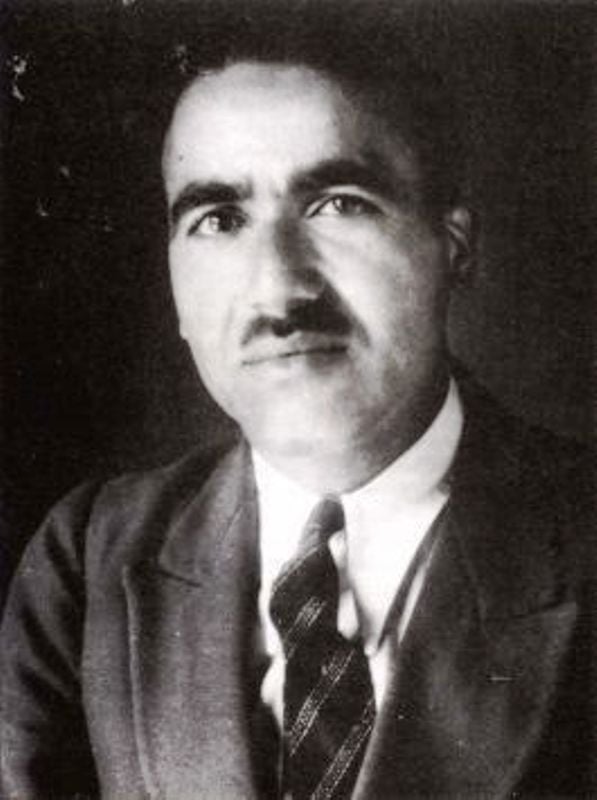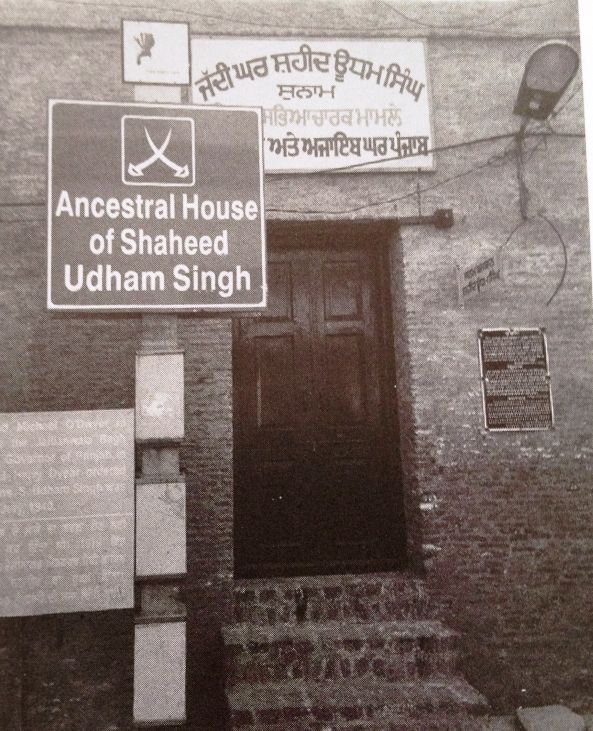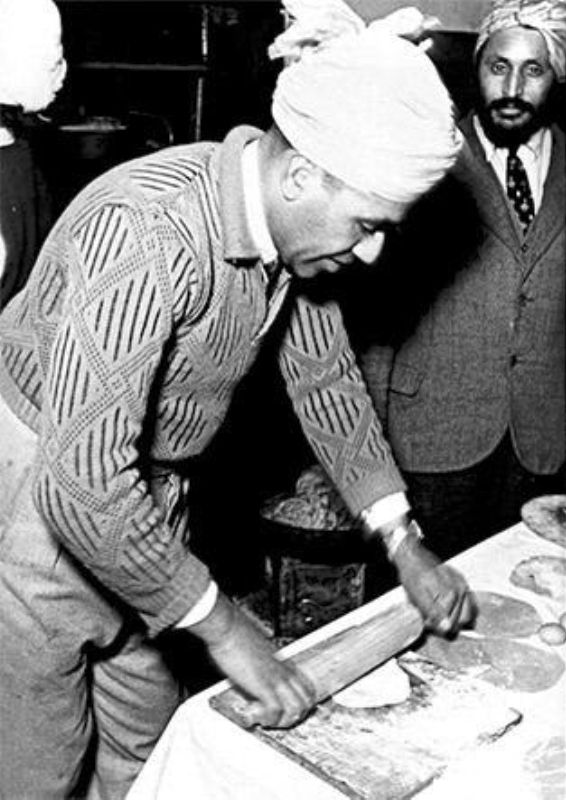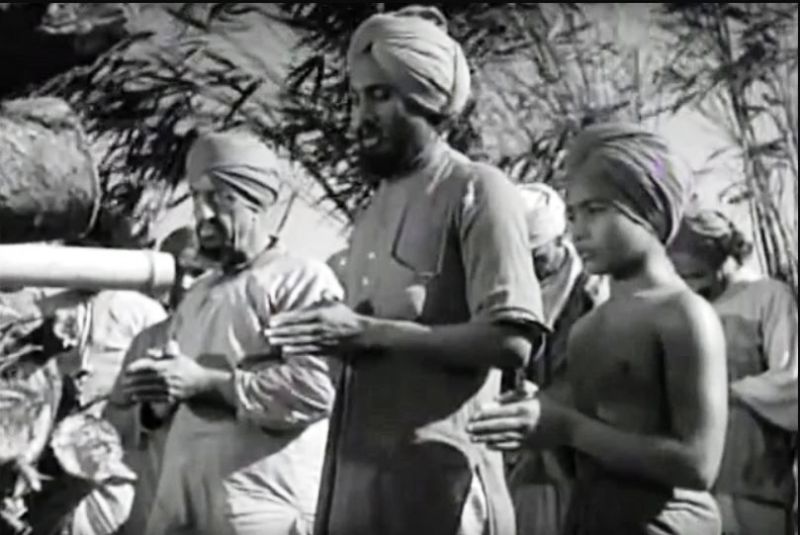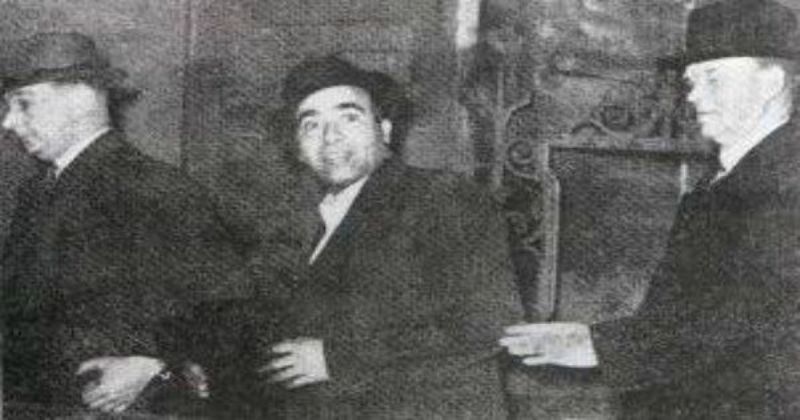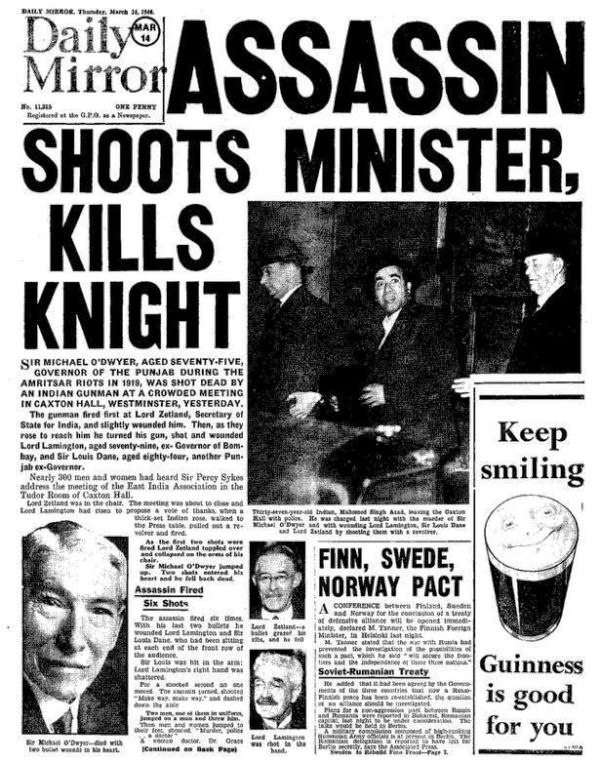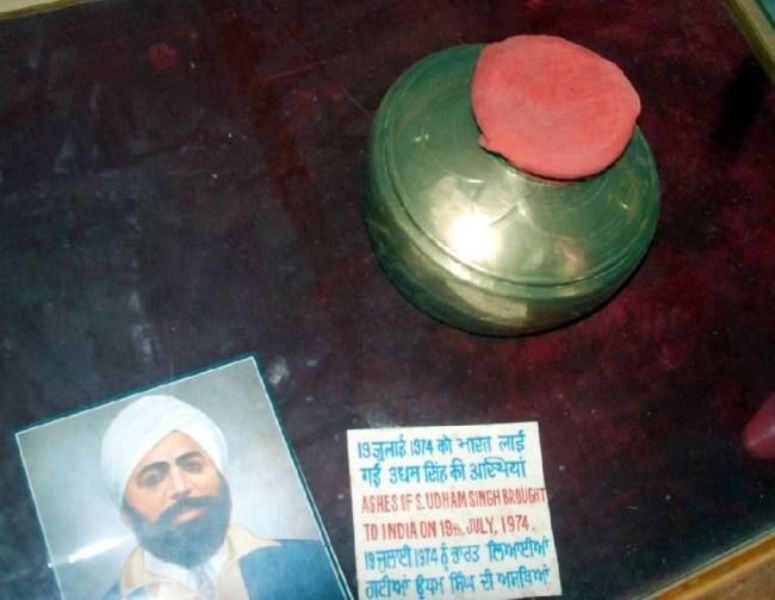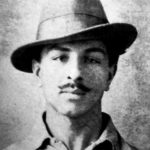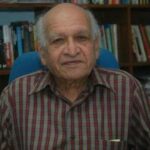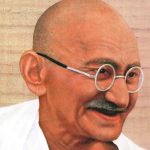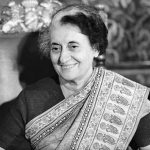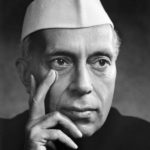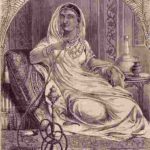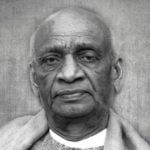Udham Singh Age, Death, Caste, Wife, Children, Family, Biography & More
| Bio/Wiki | |
|---|---|
| Birth name | Sher Singh [1]The Wire |
| Other name | Ram Mohammad Singh Azad [2]Revolutionary Democracy |
| Names Earned | • Shaheed-E-Azam Udham Singh [3]The Wire • The Patient Assassin [4]The Wire • The Lone Assassin [5]The Wire |
| Profession | Revolutionary Freedom Fighter |
| Famous for | Assassinating Sir Michael O’ Dwyer (former Lieutenant Governor of Punjab who ordered the Jallianwala Bagh massacre) |
| Physical Stats & More | |
| Height (approx.) | in centimeters- 168 cm in meters- 1.68 m in feet & inches- 5’ 6” |
| Eye Colour | Black |
| Hair Colour | Black |
| Freedom Fighter | |
| Active Years | 1924-1940 |
| Major Organisations | • Ghadar Party • Hindustan Socialist Republican Association (HSRA) • Indian Workers' Association |
| Legacy | • Udham Singh's room in the Central Khalsa Orphanage in Amritsar has been turned into a museum. • A charity is dedicated to Udham Singh on Soho Road, Birmingham. • Singh’s knife, diary, and a bullet from the shooting at Caxton Hall are preserved in the Black Museum of Scotland Yard. • In 1992, the Indian government released a stamp to honour Shaheed Udham Singh. 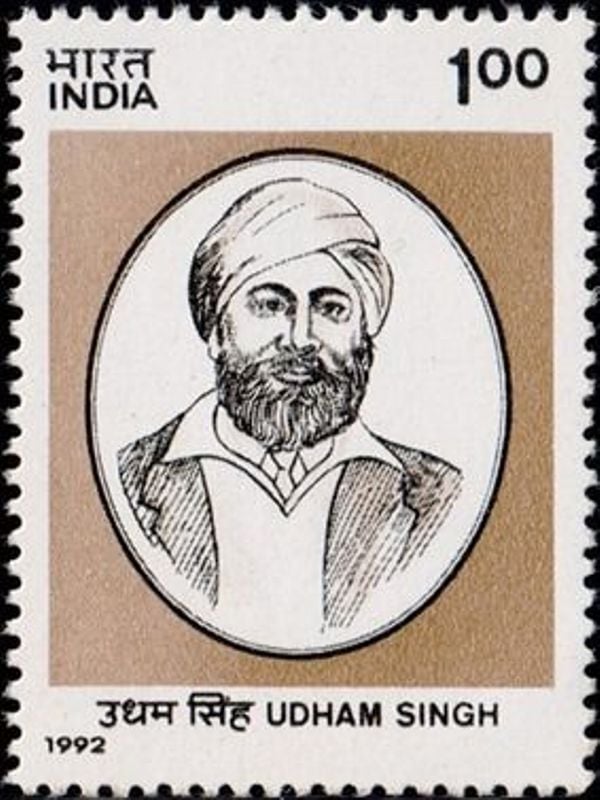 • A chowk is named Shaheed Udham Singh in Anupgarh, Rajasthan. • In 1995, the erstwhile Uttarakhand government named a district “Udham Singh Nagar” after him. • The Asian Dub Foundation released a music track “Assassin” on Udham Singh in 1998. • Many Bollywood and Punjabi movies have been made on the life of Udham Singh including Sarfarosh: The Story of Shaheed Udham Singh (1976), Jallianwala Bagh (1977), Shaheed Uddham Singh (1977), Shaheed Uddham Singh (2000), and Sardar Udham (2021). • In January 2006, the Punjab government officially renamed Singh’s birthplace Sunam as ‘Sunam Udham Singh Wala.’ • In 2015, the Indian band Ska Vengers released an animated music video called ‘Frank Brazil' dedicated to Udham Singh on his 75th death anniversary. • On the Baisakhi of 2018, a 10ft tall statue of Udham Singh with his hand holding blood-soaked earth was commemorated at Jallianwala Bagh.  • Every year, Punjab and Haryana observe a public holiday on 31st July as Shaheed Udham Singh’s Martyrdom Day. [6]Public Holidays • Udham Singh's birthplace, Sunam, witnesses marches being held every year on his death anniversary. • In October 2021, the film "Sardar Udham" was released to pay tribute to the unsung hero — Udham Singh. Bollywood actor Vicky Kaushal played the role of the martyr in the movie, and his gripping performance, along with brilliant cinematography, got the film shortlisted for India's official entry into the 94th Academy Awards. [7]Times of India 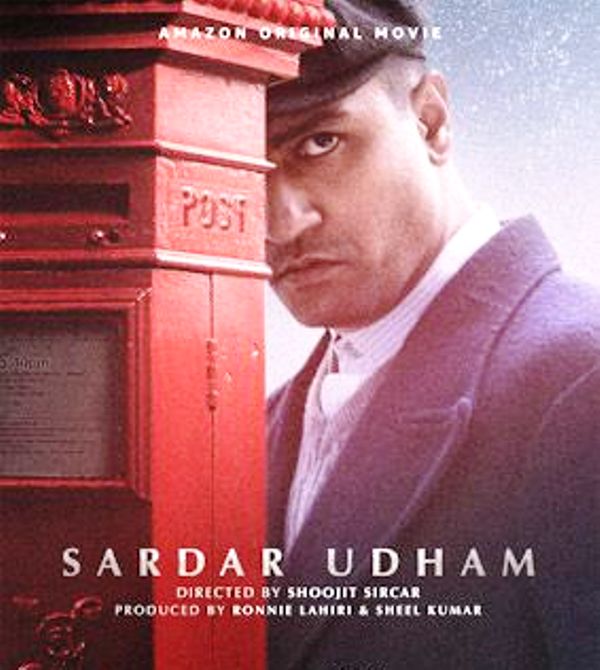 |
| Personal Life | |
| Date of Birth | 28 December 1899 (Thursday) |
| Birthplace | Sunam, Punjab |
| Date of Death | 31 July 1940 |
| Place of Death | Pentonville Prison, London |
| Age (at the time of death) | 41 Years |
| Death Cause | Executed for assassinating Sir Michael O’ Dwyer [8]Times Now |
| Zodiac sign | Capricorn |
| Signature |  |
| Nationality | Indian |
| Hometown | Sunam, Punjab |
| Religion/Religious Views | Udham Singh belonged to a Punjabi Sikh family and is remembered as a Sikh shaheed; however, throughout his life, Udham kept a clean-shaven look. It was alleged that Singh, a revolutionary by heart, prioritised his Punjabi identity over his personal faith. Singh, who called himself Ram Mohammad Singh Azad while in Brixton Prison, reportedly, told an inspector that at the age of seven, he used to call himself Ram Mohammad Singh. Udham also revealed that he liked Mohamedan religion and tried to mix with Mohamedans. Other reports from 1940 revealed that Singh apparently requested for a turban and a Gutka (Sikh prayer book) after his death sentence was announced, which left many speculating about his religious inclinations towards Sikhism. Another book, "The Patient Assassin," on Shaheed's life by Anita Anand referred to him as an atheist. It says that Singh's thoughts about his faith got influenced by his "guru" Bhagat Singh who inspired him to incline towards atheism. [9]The Wire |
| Caste | Other Backward Class (OBC) [10]The Wire Note: He belonged to a peasant Punjabi Kamboj Sikh family. |
| Tattoo | Ram Mohammad Singh Azad - His last nom de guerre was tattooed on his arm as a symbol of unification of all the major religions in India against the Britishers. [11]The Times of India |
| Controversies | • Udham Singh killed the wrong Dwyer: Some studies from 1940 state that Singh had, apparently, mistaken Sir Michael O'Dwyer for General Reginald Dyer, pertaining to their similarly pronounced names, and he killed the wrong person. The majority of people, however, believed that he killed the right person, and it was all a part of his larger plan. [12]The Times of India [13]The Wire • Singh worked for O’Dwyer: The Times UK dated 14 March 1940 published that O’Dwyer was murdered by his chauffeur. This report started a debate whether Udham Singh had worked for the general; however, in a book titled 'The Amritsar Legacy,' published in 1989 by Roger, it was mentioned that Singh had served as a chauffeur to a retired Indian Army officer. [14]The Tribune • Udham Singh's oath on copy of Heer-Ranjha: It was widely reported in 1940 that Singh refused to take oath on any holy book, instead he used a copy of famous Punjabi classic Heer-Ranjha by Waris Shah for the same. A few years after he was executed, Shaheed Udham Singh Welfare Trust of Birmingham, England questioned these claims and revealed that the letter written by Singh in jail was inauthentic according to the handwriting experts who examined it. [15]The Times of India 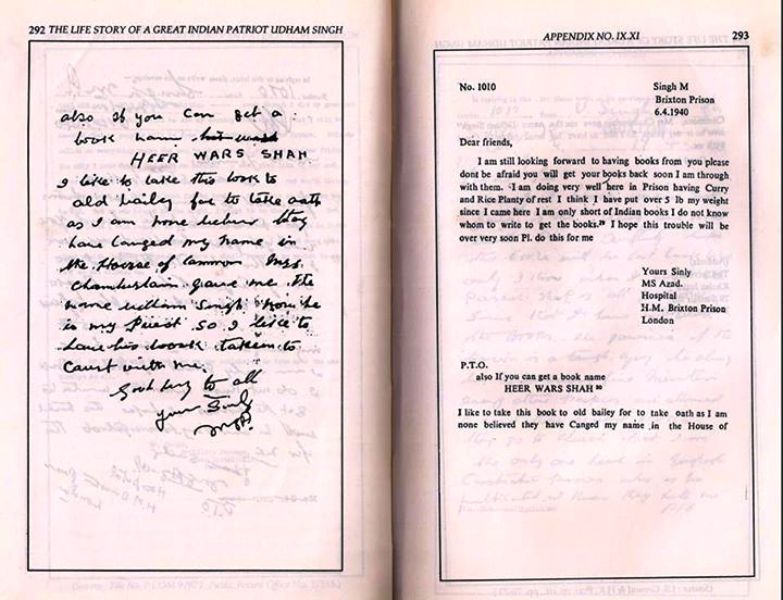 |
| Relationships & More | |
| Marital Status (at the time of death) | • Source 1 [16]CrimeReads: Married • Source 2 [17]The Times of India: Unmarried |
| Family | |
| Wife/Spouse | • Source 1 [18]CrimeReads: Udham Singh married a Mexican woman, Lupe. • Source 2 [19]The Times of India: He never married. |
| Children | Udham Singh had two sons. [20]CrimeReads |
| Parents | Father- Tehal Singh (died in 1907) (Railway Gate Keeper at Village Uppali) Mother- Mata Narain Kaur (died in 1901) |
| Siblings | Brother- Sadhu Singh (earlier Mukta Singh) (elder) (died in 1917) Sister- None |
| Favourites | |
| Poet | Ram Prasad Bismal (leading poet of the revolutionaries) |
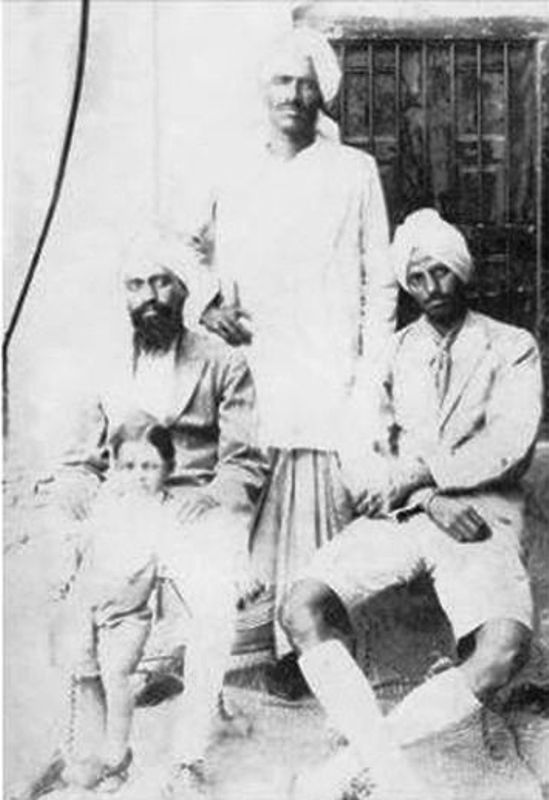
Some Lesser Known Facts About Udham Singh
- Udham Singh was an Indian revolutionary and freedom fighter who is a well-known name in Indian history for single-handedly avenging the Jallianwala Bagh massacre of 1919. In March 1940, Singh assassinated the then Lieutenant Governor of Punjab, Sir Michael O’ Dwyer, who allowed the bloodbath.
- Udham Singh was honoured with the title of Shaheed-E-Azam by the Indian government.
- Singh’s father migrated to Amritsar along with Udham and his brother, but soon, his father passed away in 1907, six years later than Udham’s mother died. The orphaned children were then admitted by the Central Khalsa Orphanage of Putlighar in Amritsar. In the orphanage, the kids were administered under the Sikh initiation rites, where they were given new identities – Sher Singh became Udham Singh, and his brother Mukta Singh became Sadhu Singh. [21]The Wire
- Udham’s brother also passed away in 1917, and in the next year, he completed his matriculation exams. In 1919, he finally left the orphanage.
- Singh joined the British Indian Army during the First World War as a manual labourer and travelled overseas. It was after he witnessed the carnage of the Jallianwala Bagh in 1919 that his life as a revolutionary began; however, it has not yet been confirmed if Singh was himself present on the site at the time of the massacre, or if he went there as a volunteer from a Sikh orphanage after the bloodbath had happened. [22]The Wire [23]Bhai Gurdas Library Several accounts from that time have also reported that Udham Singh had taken a dip in the holy Sarovar of the Golden Temple in Amristar and vowed to avenge the lives of hundreds of innocent people who had died that day on the command of O’ Dwyer. [24]Dainik Jagran
- The horrific incident led Singh on the path of revolution, and during his two decades of political activism, Udham Singh travelled four continents with different names and occupations. His aliases included Ude Singh, Frank Brazil, Udhan Singh, Uday Singh, and the last one – Ram Mohammad Singh Azad. [25]The Wire
- In the early 1920s, Udham joined the Ghadar movement and campaigned for the revolutionaries by distributing their apparently “seditious” literature across Punjab. He also got associated with the London-based Indian Workers Association. As a Ghadarite, Singh also met several radical nationalists, who further influenced his political ideologies. [26]The Wire
- Around the same time, he took up some work in East Africa, and there, he got more involved with the Ghadar revolutionaries. In 1922, Singh came back to India, where he got involved in the militant activities of the Babbar Akali movement. He carried out his revolutionary activities from a shop that he had opened in Amritsar after returning to India.
- In 1924, Singh illegally crossed the Mexico-U.S. border to reach San Francisco, the city that was the epicentre of the Ghadar movement in America. During his stay in the U.S., Udham actively travelled all across the country to recruit members for the Ghadar Party. Soon, he also launched his own party, the Azad Party, as an offshoot of the Ghadar movement. [27]The Wire
- After he was done with his work in the U.S., Singh left the country as a carpenter and seaman who worked for an American shipping line. He then travelled to Europe to establish contacts with the revolutionaries there.
- The revolutionary travelled to over 20 countries while working for the Ghadar Party. He also visited Germany, Japan, Poland, Soviet Union, Italy, Hong Kong, Malaysia, Holland, Iran, Singapore, and more. [28]The Wire
- In 1927, Singh again returned to India with the aim of spreading Ghadarite propaganda. He smuggled ammunition, revolvers, and pistols in the country along with some copies of the banned “seditious” literature, which included Ghadr-di-Gunj, Ghadr-di-duri, Desh Bhagat-di-Jaan, and Gulami-da-Jehar. The revolutionary ended up in Amritsar jail on 30 August after he was charged under the Arms Act and sentenced to five years imprisonment. [29]The Wire
- Even when he was in jail, Udham Singh continued propagating the Ghadarite propaganda amongst his inmates. He was thrown into solitary confinement and was frequently shifted between different jails for being “a difficult prisoner.” It is also believed that he met Bhagat Singh during his imprisonment, whom Udham Singh considered his “guru” and “best friend.” According to some reports, Udham also carried a photo of Bhagat Singh in his wallet. Udham apparently said in a letter that he wrote while serving his sentence: [30]The Wire
It is since 10 years when my friend [Bhagat Singh] has left me behind and I am sure after my death I will see him as he is waiting for me…it was 23rd [when Bhagat Singh was hanged] and I hope they will hang me on the same date as he was.”
- On 23 October 1931, Singh was released from jail after serving the sentence only for four years. His close links with Bhagat Singh’s Hindustan Socialist Republican Association kept him on the radar of the British police. After being released, Udham first went to his native town Sunam in Punjab, where he was constantly harassed by the local police; the situation forced him to move back to Amritsar, where he opened a shop as a signboard painter with the alias Ram Mohammad Singh Azad. [31]Bhai Gurdas Library
- Again, Singh carried out his revolutionary activities in Punjab for a few years from his shop in Amritsar, but this time he simultaneously mapped a plan to go to London and kill O’Dwyer. Being a revolutionary, he was constantly under surveillance by the police; however, he successfully managed to escape to Germany in 1933 via Kashmir – a journey that Singh undertook from Sunam. A year later in 1934, Singh finally reached England. Some secret reports of the British Police, however, had claimed that Udham Singh was still in India till early 1934. According to them, he stayed in Italy for around 3-4 months, and then he travelled to France, Switzerland, and Austria, before finally reaching England in 1934. [32]Dainik Jagran
- During his stay in England, Udham became known by his last nom de guerre Ram Mohammad Singh Azad. He took up various working-class jobs and joined the Indian Workers Association (IWA) in London. [33]The Wire
- Udham Singh appeared as an extra in the movies Elephant Boy (1937) and The Four Feathers (1939). [34]The Wire
- On 13 March 1940, almost six years after waiting patiently in England, Singh finally found his opportunity to take his revenge at the Caxton Hall, London, where a meeting of the East India Association was being held in conjunction with the Royal Central Asian Society. Udham entered the hall with a revolver hidden in his diary, and at 4:30 p.m., he fired five to six shots at Sir Michael O’Dwyer, who had just stepped on the stage to speak on the occasion. The former Lieutenant-Governor of Punjab, who had allowed the killing of hundreds in Jallianwala Bagh, fell to death in two shots. [35]Bhai Gurdas Library
- Singh’s bullets had also hit and injured Lord Zetland – the Secretary of State for India and former Governor of Bengal, Lord Lamington – the former Governor of Bombay (now Mumbai), and Sir Louis Dane – a former Lieutenant-Governor of Punjab, who all were present there. According to reports, Udham Singh or Ram Mohammad Singh Azad, as he was referred to in the reports, made no attempt to escape and waited for the police to arrest him. After the incident, Singh was taken to the Brixton prison in London directly from the Caxton Hall. [36]The Wire
- On 1 April 1940, Singh was formally charged with the murder of Sir Michael O’Dwyer, and he was kept in Brixton Prison. While waiting for his trial, the Indian revolutionary continued revolting and went on a 42-day-long hunger strike before he was force-fed. The hunger strike made Singh physically weak considerably. [37]The Wire
- On 4 June, he was taken for his two-day trial at the Central Criminal Court, Old Bailey. Justice Atkinson was the judge who passed Udham Singh’s death sentence. During his trial, Singh pleaded ‘not guilty,’ and he used to laugh at the jury. Press also confused his name and identity as he referred to himself as Ram Mohammad Singh Azad. According to some reports, Singh took the oath on the copy of the Punjabi classic love story Heer-Ranjha by Waris Shah, rather than using a holy book. His actions prompted his defence team led by V. K. Krishna Menon, who served as the fifth Defence Minister of independent India from 1957 to 1962, to plead that he was insane; however, Singh didn’t agree with his team and asked them not to put such a plea in the court. [38]The Logical Indian
- On 15 July 1940, another appeal was filed in the court on Singh’s behalf that was turned down. [39]Bhai Gurdas Library
- A fortnight later, on 31st July 1940, Udham Singh was hanged to death at the Pentonville Prison in London, and he was buried in the prison graveyard. Some reports claim that Singh refused to bow to any holy book even on his way to the gallows. [40]The Times of India
- Singh’s explanation for killing O’Dwyer, and his controversial court statements made during the trials, became popular years after his death when the documents resurfaced. In his last speech, Udham Singh said,
[41]Clarion India [42]The Times of IndiaI did it because… he [Michael O’Dwyer] deserved it. He… wanted to crush the spirit of my people, so I have crushed him. For full 21 years, I have been trying to wreak vengeance. I am happy I have done the job. I am not scared of death. I am dying for my country. I do not care about the sentence of death…I am dying for a purpose…We are suffering from the British Empire…I am proud to die to free my native land and I hope that when I am gone…in my place will come thousands of my countrymen to drive you dirty dogs out; to free my country…you will be cleansed out of India. And your British imperialism will be smashed…I have nothing against the English people at all…I have great sympathy with the workers of England. I am against the imperialist government. Down With British Imperialism!”
- Singh also thrice exuberated the slogan of “Inquilab Zindabad!” and looked at the judge, jury, and the press in the court while shouting the slogan. [43]The Wire
- In July 1974, nearly 35 years after being buried in London, Udham Singh’s remains were exhumed and repatriated to India after a petition made by the then Chief Minister of Punjab, Giani Zail Singh. Reportedly, the CM had asked the then Indian Prime Minister Indira Gandhi to request for the same from the erstwhile British Government. Upon reaching India, Shaheed Udham Singh was given a martyr’s reception, and his mortal remains were taken to his native village of Sunam in Punjab, where he was formally cremated. Reportedly, Singh’s final rites were performed on 2 August 1974 by a Brahmin Pandit, a Maulvi, and a Sikh Granthi together. His ashes were distributed into different urns. One urn was each buried in holy places of the three faiths- Hindu, Muslim, and Sikh. Ashes from another urn were scattered in the Ganga river, while one urn is kept in the Jallianwala Bagh, Amritsar as a tribute to the freedom fighter. [44]Dainik Jagran [45]The Wire
- Indian Congress leaders at the time strongly condemned Singh’s act of revenge of shooting O’Dwyer dead. In a statement made to the press, Mahatma Gandhi said, [46]Mint
The outrage has caused me deep pain. I regard it as an act of insanity…I hope this will not be allowed to affect political judgement.”
References/Sources:

